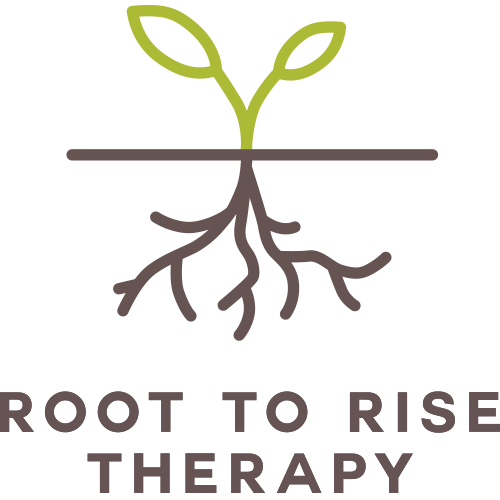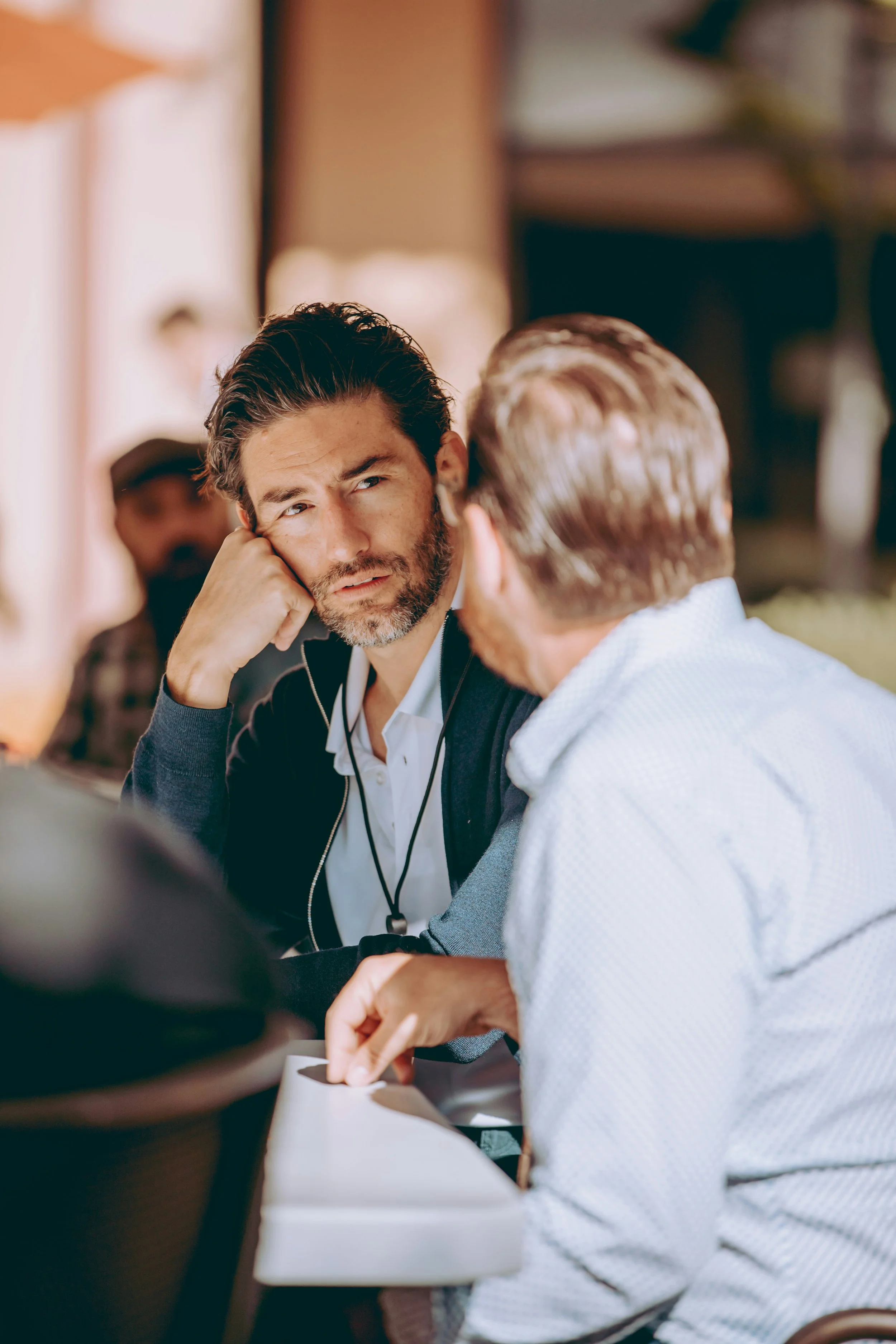Within each family unit, there are several subsystems. Subsystems can be thought of as allied relationships between two identified people within the family system, for example, parents are one subsystem, siblings are another, etc. Unlike subsystems, family triangles consist of three members. When triangles start to emerge, they can disrupt the functioning of the family system as a whole. If two family members are experiencing extreme tension in their relationship, similar to the example above, they might consciously or unconsciously look to bring in a third member to transfer that tension.
Nervous System Regulation Tips
Here are 5 quick and easy tools to calm the sympathetic nervous system and activate the parasympathetic nervous system when feeling dysregulated.
Am I Too Much?
I have heard people speak before about this concept of believing that they are ‘too much’ when it comes to relationships. This belief can keep people self-rejecting, negatively spiraling, and making rules like "I should keep who I am all to myself and shut down because I am too much." It is a distancing fear-based act that signals sympathetic flight mode, which puts the nervous system in a place of stress where the hypothalamus that regulates mood, sleep, hunger, and thirst in the brain activates the adrenal glands which releases about 30 stress hormones. As a result, the body slows digestion, increases heart rate, shortens breath, and constricts muscles. These beliefs, rules, emotional, and physical responses can lead to a perpetual pattern of isolating and closing off from relationships.
Foreboding Joy
If I asked you to name a vulnerable emotion, joy doesn’t present as the obvious answer. Instead, we tend to think about shame, loneliness, anger, anxiety, and other more traditionally “negative” emotions. So how is joy potentially the most vulnerable emotion we experience? Brene Brown answers this question in her research about foreboding joy, which she defines as: “the experience of joy immediately followed by worry or dread.”
So many of us have experienced this confusing phenomenon of mixed emotions without an understanding as to what or why this is happening internally. The feeling is so widespread that many idioms have attempted to illustrate this particular experience: have you ever thought, “This is too good to be true” or experienced the feeling of “waiting for the other shoe to drop?” I know I have experienced this long before I had a name for it. I remember one particular instance where I was looking over at my partner with love and awe, only to have the feeling transform into fears about the end of the relationship and how devastated I would feel. I also remember the intense negative self-judgment I experienced, becoming frustrated that I couldn’t enjoy a good thing and had to ruin it with these intrusive thoughts. Learning about foreboding joy has been illuminating and validating when thinking back on these memories.
I hear this same self-talk in therapy sessions every day. I have clients who describe not wanting to get too excited about a new relationship, not wanting to settle into a sense of calm at a new job, and generally not wanting to let their guard down in case the positive experience doesn’t last. So, why do we do this? Why does dread often follow joy?
Rest is Productive
As I type out these words, I find myself feeling overwhelmingly tired and in need of rest (in part due to the record-breaking heat wave taking over Los Angeles)… and so, I find it fitting to write about my experience. In this oppressive heat, I feel an all-encompassing sense of fatigue, trouble concentrating, eyelids drooping, and muscles feeling immensely heavy as I melt into the couch. Do these sensations sound familiar? As humans, we all need rest. That much is clear. So why do so many of us have such a hard time allowing ourselves to stop, slow down, and rest?
Over the years I’ve heard, and likely uttered, phrases such as, “I don’t have time to rest,” “I have too many things to do,” “I have no reason to feel tired,” “I don’t want to be lazy,” “I feel guilty when I rest,” and so on.
The way our capitalistic society requires us to operate is ultimately not sustainable. We are not computers… and even our computers need time to recharge! —and, to add to this metaphor, even a fully charged computer will begin to overheat and freeze up if it’s running too many applications at once!
Let’s start by reframing rest as productive—and move forward from there.
Toxic Positivity
Have you ever confided in someone about a vulnerable topic, only to be met with some variation of “Don’t be sad” or “It’ll be okay!” While well-intentioned, these responses can be more harmful than helpful.
A couple of weeks ago, I realized I was in a funk. I started sharing my experience with a friend after working up the courage to ask for support, who immediately launched into a very cheery explanation of everything that makes her feel better that ended with “You’ll feel better in no time!” After the conversation, I was left feeling withdrawn and confused. Why had this made me feel worse? The advice she gave me (journaling, positive affirmations, headspace shifting, and exercise) was exactly what I would and have recommended to clients and friends. On top of that, I know she was trying so hard to help me and I felt ungrateful. The problem was, I KNEW all of the advice she gave me already, but it’s really hard to “just shift your headspace” or “just think positively” when you’re struggling to get out of bed. Whether or not it was her intention, the subtext I heard was that the way I was feeling was a choice I was making and I should just snap out of it.
When I first heard the term “toxic positivity,” it felt like an oxymoron. How could positivity be toxic?
I'm FINE
It’s 7 PM on a Tuesday and your partner asks, “How are you? How was your day?” You stop to consider how to answer the question. You do a quick scan of your body and try to remember the day. Your neck is hurting from sitting at the computer, thoughts swirling in your head about that salty interaction you and your partner had that morning that went unaddressed, you just got a panicked text from your mother who needs you to call her immediately, you are annoyed with yourself for eating the peanut m & m’s when you said you wouldn’t, and to boot, you were up half the night stressing about a work project, so you were completely exhausted the entire day.
So, when your partner asks “How are you?” all you are able to muster up is the answer “I’m fine. It was fine.”
I’ve heard a few acronyms to describe the word FINE. F=Fucked Up, I= Insecure, N=Neurotic, and E=Emotional.
I also heard that FINE stands for Feelings Inside Not Expressed- a slightly more compassionate description. In my example above, from the neck pain to the disappointment in myself for eating the M & Ms, to the salty interaction from the morning, there were many feelings happening that were not being said.
Attachment Styles
Working with a therapist can help you address and reflect on lingering issues from childhood that might be impacting your ability to form secure and meaningful relationships as an adult. It can help you develop a sense of security as an individual that can be carried over into your relationships with others. Your therapist can act as that secure base, listening attentively and non-judgmentally as you take a deep dive into this journey of your past and self-exploration.
A benefit of this work can be focusing on understanding and rebuilding your trust in others and the world around you, as well as learning techniques to understand how to set clear boundaries with yourself and others. Working with your therapist, you can learn to “re-parent” yourself with love and compassion, and that can help you realize your purpose and replace those fearful thoughts associated with abandonment and being hurt by others.
Attachment theory recognizes four different types of attachment: anxious, avoidant, fearful-avoidant, and secure.
Coping with Illness
Flakey pie crust bakes in the oven and the aroma of cheese and tarragon wafts around me as I sit in my kitchen nook at sunset. Since childhood, the veggie pot pie has been one of my favorite dishes. I am instantly comforted whenever I smell it cooking in the oven. When I’m feeling under the weather, I find comfort in nostalgic smells.
I finally got COVID. After being quite cautious during the last 2.5 years of the pandemic, I was frustrated to ultimately get COVID simply from going about my everyday routine. When I get acutely sick, I tend to go through rapid stages of the grief cycle.*
First, I tend to go into an initial denial phase and tell myself, "oh, I am just tired," and then push forward with my responsibilities at home and with my virtual work.
Second, I get angry and think, "Oh, no. I might be sick. How could I let myself get sick at a time like this?!"
And after the anger subsides, the bargaining comes: "If I can get better super quick…like in the next day…I promise I will do more meditation and yoga, improve my sleep and reduce my stress level so that I don't get sick again."
Then comes the depression when the symptoms quicken, as I mope in bed and think, "Life is terrible. I am unhappy. What am I doing with my life? How did I get here? I don't care about anything anymore. I am so unmotivated. Am I depressed? Have I been depressed for months and not realized it? Nothing brings me joy anymore." Walking my dog and smiling with my latte just a few days prior now feel like a distant memory. The depression phase tends to be the longest as I lay in bed, and it feels like I have been this down and having these low thoughts for years.
I must decide during the depression phase to move into acceptance. The decision is to recognize that this pain and discomfort are temporary and that suffering and the depressive state are optional. I start to recall monks who meditate with discomfort and pain in the heat on top of a mountain. The sun will move from the hill, the day will cool, and the sweat will subside. Everything is temporary.
As time passes, I start to move into greater acceptance.
Here are five tips that helped me move forward from depression to acceptance to coping with acute illness, and eventually renewed joy:














